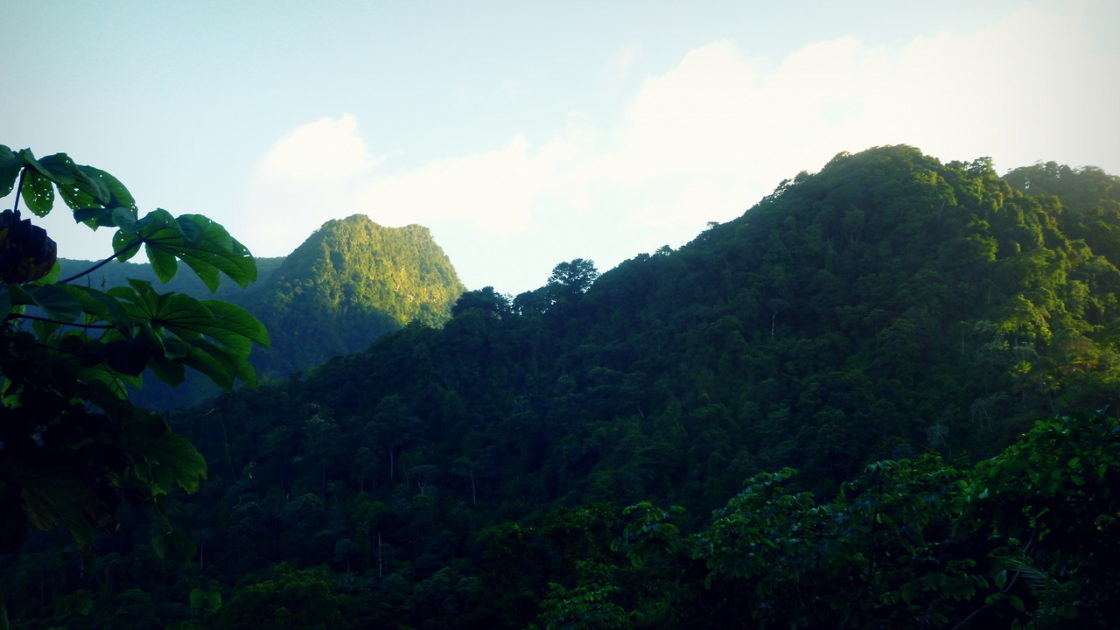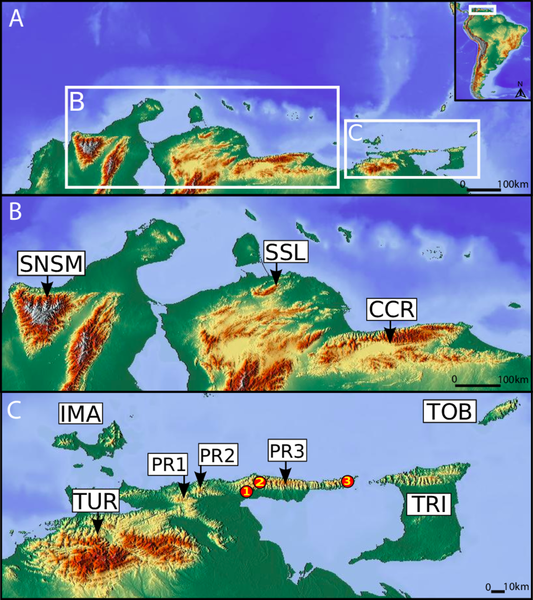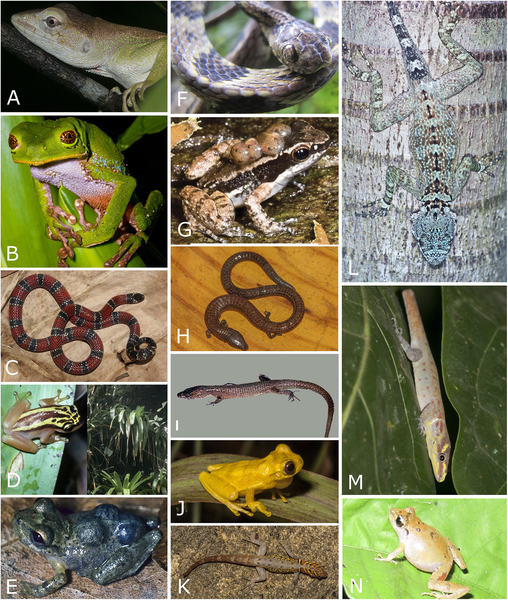In this interview, we chat with Alex about her recent publication in PLOS ONE, life as an early career researcher, and the…
Amphibians and reptiles on the edge: An interview with intrepid PLOS ONE authors

Amphibians and reptiles are among the world’s most extraordinary and most threatened animals. In this post, we highlight work recently published in PLOS ONE by Rivas and colleagues, which probes the diversity of species in an understudied region at the northernmost extremity of South America. We spoke with the authors about their research and its broader context.
What was the motivation for your study?
Initially, the study aimed to understand the composition of the reptiles and amphibians of a region in northeastern Venezuela, namely the Paria Peninsula and surrounding mountains. However, along the way, many other questions stared emerging concerning the composition and faunal relationships of the whole region, so we aimed to compare the herpetological composition of all the northernmost coastal mountains of South America, ranging from northeastern Colombia through Venezuela to the Caribbean islands of Trinidad and Tobago, totaling about 1000 km east to west.

How did you get to the sampling locations? Were there any challenges with the fieldwork?
We sampled in eastern Venezuela (Paria Peninsula), which had already been visited by some of us for about 20 years. We visited some locations in central and western Venezuela, and we had exhaustive literature records and museum revisions at our hands. Similarly, records from Trinidad and Tobago were available from three decades of field trips carried out by some of us as well as through the University of the West Indies and Glasgow University students and staff members. This study was only possible though decades of expeditions and fieldwork in the region by several of the authors of this paper. There were many challenges, especially in Venezuela, such as those related to transport, lack of fuel, increased travel costs, insecurity and remoteness of some of the sampling sites. Fortunately, safety was always supported by local agencies and communities in eastern Venezuela. In addition, funding was at the time lacking or limited for fieldwork in Venezuela and Trinidad, and travel expenses at times were privately funded by ourselves.
Could you briefly describe the key findings of your study and their importance? Were there any surprises?
This is the first study to address the biogeographic patterns of any vertebrates in the region at this scale. We ultimately recorded a total of 294 native species distributed above 200 m in elevation along all the mountain systems. The biogeographic composition supports close species associations for both reptiles and amphibians within regions, such as western areas (northeastern Colombia and western Venezuela) versus eastern localities (eastern Venezuela and Trinidad and Tobago). Our biogeographical findings support the geological history, with the whole region once being a mountain chain that connected all the way up to Tobago, and biogeographical patterns following a natural topographic disposition. However, when we compared species at high elevations, the arrangements were more unstable, with lower numbers of species shared between areas and a minimal association between areas. This suggests that faunal patterns at higher elevations represent more exclusive species which are less useful to assess biogeographic relationships in the region. Overall, the high diversity of reptile species found throughout the study area reflects their dispersal capability and the presence of habitat generalists when compared to the more restricted and ecologically constrained amphibians.

What are the main threats to species and ecosystems in the region?
In northern Venezuela the habitat loss is mostly due to logging, illegal crops, and livestock, and to a lesser degree mining, particularly in lower and medium elevations in some mountains. In eastern Venezuela, the most threatened environments are the cloud forest, and it’s increasingly common to find local crops, even within protected areas, putting pressure on the very much depleted hydric resources of some areas. We have encountered small-scale crops at elevations of up to 1500 m. More worrisome is the fact that several illegal crops do not even belong to local villagers but to farmers from the lowland towns, which are increasingly looking for higher and fresher locations for their crops. Low altitude tropical cloud forests such as those found in the Paria Peninsula and in Trinidad are among the most vulnerable terrestrial ecosystems to climate change. Some cloud forests have exceptional low altitudinal ranges and require detailed species inventories, population assessments, and the establishment of new, well-run national parks to protect biodiversity. In addition the lack of scientific funding in the region is limiting the understanding of this biodiversity hotspot.
How can scientific research help us better understand and protect biodiversity in this region?
This and previous studies undertaken by some co-authors are increasingly important to understand the importance of these ecosystems on a wider scale. These mountains can be viewed as the northeastern natural extension of the Andes chain, but due to their relatively low altitude, they have been undervalued in terms of their biodiversity and biogeographical relevance. In addition, surveys help establish species checklists and report on endemism in the region. Taxonomic studies based partly on phylogenetic analyses are key to assess the high rate of cryptic species in the region. Through species descriptions, understanding of population ranges and biogeographic barriers can help establish new areas that need protection. Furthermore, there seems to be little research on ecological studies at a broader scale in the region. In addition, little is known in this region compared to that of The Guianas or Brazil.
Future research should have an important conservation component, as well as the involvement of citizen research. Environmental education with a strong conservation focus must be a priority and be consistently delivered to local communities, which also applies to most Venezuelan national parks. Finally, ecotourism could help establish new sources of income in the region, although the political, economic and safety situation in Venezuela, and to a lesser degree in Trinidad, are obstacles to its development. An important contribution to the preservation of the national parks would be to finish the zoning rules and increase the expansion of some parks. New surveys and effective and consistent monitoring of the parks and other areas are urgently needed in Venezuela.

What is the importance of Open Access for your field of research and the regions where you work?
Without Open Access this research would be visible to a limited audience, mostly within academic institutions in the developed world, and not to local policymakers and scientists.
What should be the priorities for future research in this area?
As mentioned earlier the understanding of species distributions and identification is key to understand if the national parks’ delimitations are correct and if new areas should be protected. Application of molecular techniques will be a priority as much local research is based on the more traditional sciences, and there seems to be a lack of capacity in molecular techniques in Trinidad and Tobago and Venezuela. Universities should benefit from a new generation of researchers that are specialized in contemporary ecological, conservation and molecular techniques. Throughout the elaboration of this study, we had to compile a great amount of available literature on the region and it soon became apparent that most works from Venezuela were on average several decades old and some pioneering works in the region had no follow-ups since their publication. This is a reminder of the poor understanding of biodiversity in the region, in part due to the challenging socioeconomic circumstances.
Reference
Rivas GA, Lasso-Alcalá OM, Rodríguez-Olarte D, De Freitas M, Murphy JC, Pizzigalli C, et al. (2021) Biogeographical patterns of amphibians and reptiles in the northernmost coastal montane complex of South America. PLoS ONE 16(3): e0246829. https://doi.org/10.1371/journal.pone.0246829
Featured image:
El Tucuche, Trinidad- Jamie Males.
An example of an excellent paper!
Excelent work